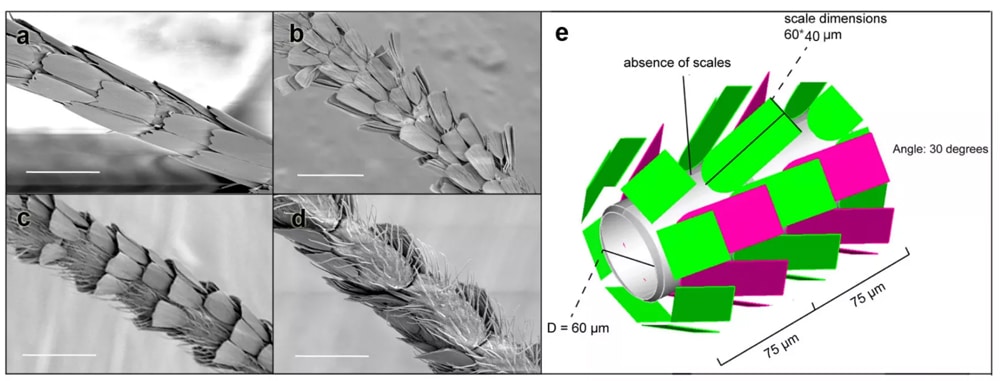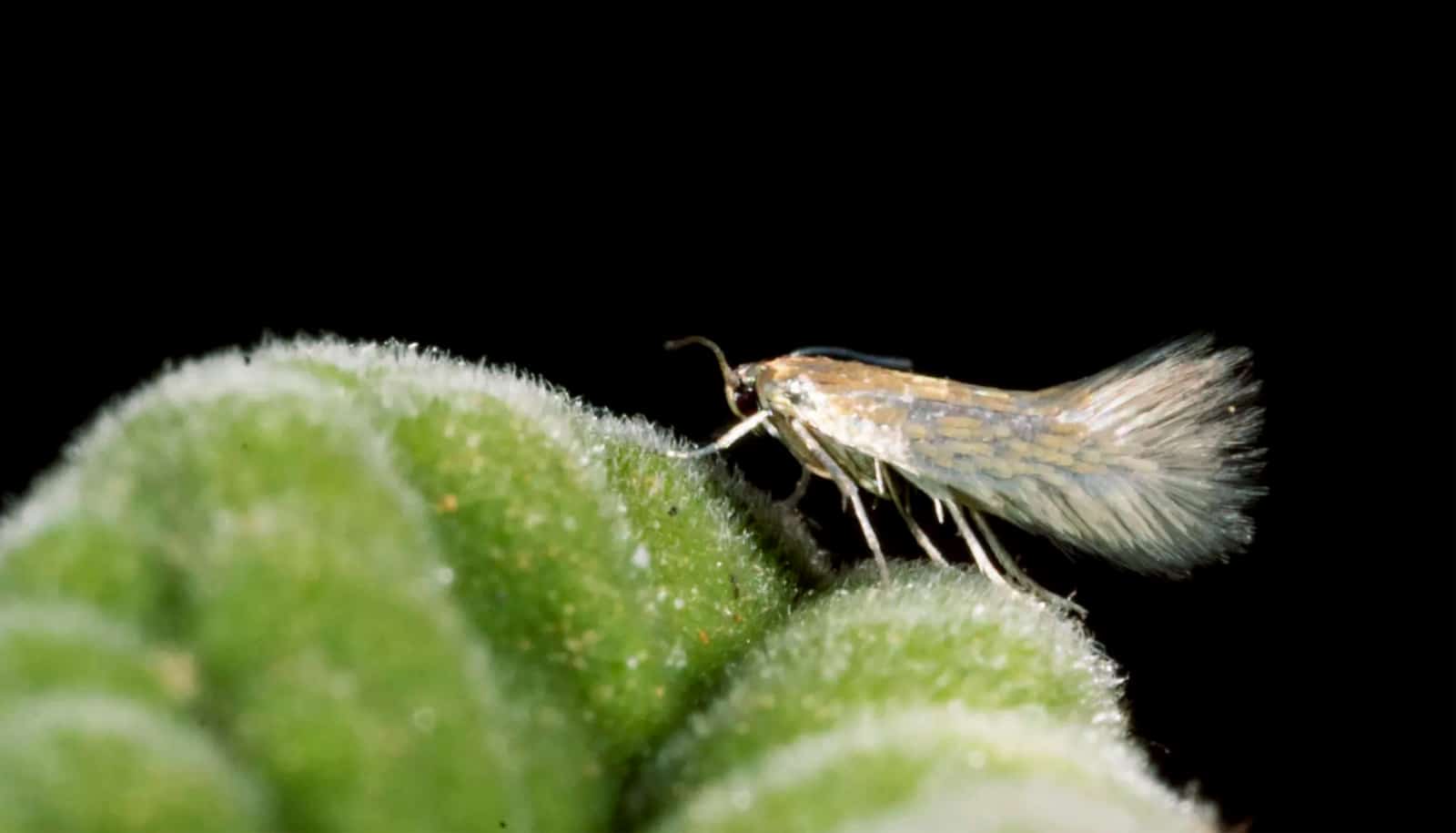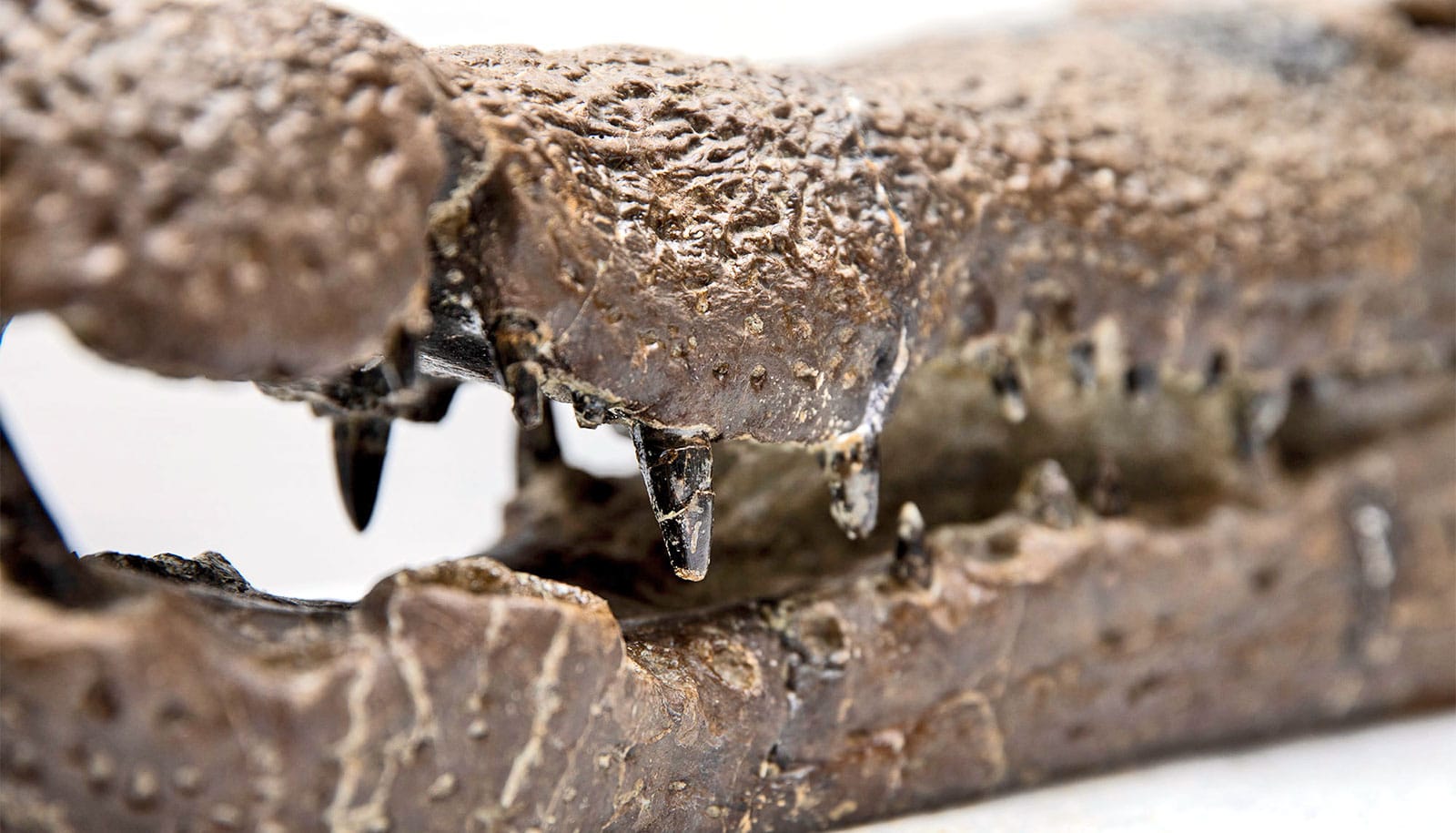Bigger antennae would help male moths detect more female sex pheromone, but would create aerodynamic drag during flight.
New research suggests the solution is for some male moths to have evolved intricate scale arrangements on their antennae to enhance detection of female sex pheromones, by trapping them close to the antennae for longer.
This also means that the antennae can remain at an optimal size to maintain flight speed.
Charles Darwin was among the first to consider how the type of antenna might influence how male insects detect sex pheromone, says Mark Elgar, professor at the University of Melbourne’s School of Biosciences.
“Darwin predicted that sexual selection, arising from competition among males, would favor more elaborate antennae in male moths, as they ensure more rapid detection of female sex pheromones. Moth sex pheromones are detected by receptors on structures called sensilla on the antennae.”
Conventional wisdom is that the feathery, bipectinate antennae in moths, arranged like two combs with numerous branches, provide a larger surface area to house the pheromone-detecting sensilla, he says.
“But what we see in nature is that the majority of moth species have simple, filamentous-shaped antennae, which led us to ask why, if they are better at detecting sex pheromones, are bipectinate antennae actually less common in moths.”
How scales trap pheromones
To understand this evolutionary dilemma, the team used scanning electron microscopy to build finely detailed 3D models of the structure of the filamentous antennae.
Then they used computational fluid dynamics techniques to simulate the airflow field around the model antennae of moths of different sizes and scale arrangements. The studies used nanoparticles in the fluid dynamic model to represent common sex pheromones and microparticles to represent environmental particles such as dust.

“We found that the angle of the scales concentrated the signal molecules to the downwind side of the antennae,” says Qike Wang, who led the experimental work while at the University of Melbourne.
“By creating an area with slow airflow around the antennae, the scales ensure pheromones linger within the detection zone, thereby increasing the efficiency with which they interact with the receptor.”
“Furthermore, the scales are also effective at diverting away larger contaminating particles, such as dust. In a sense, they sift through the different particles only retaining the favorable ones. This is particularly important for species, like moths, that cannot groom the full length of their antennae.”
Very tiny moths
When not working as director of The Walter and Eliza Hall Institute of Medical Research, professor Doug Hilton works with a group of friends on a poorly understood family of tiny day flying moths called Heliozelidae.
How female moths snag guys with big antennae
“These moths are tiny—with a wing span of only a few millimeters—and although they are found all over Australia because of their size they fly under the radar of most entomologists,” says Hilton, who has an honorary appointment in the School of Biosciences. “We embarked on a microscopic study of these moths and, in doing so, realized the structure of the antennae could tell us something new.”
The study found the effect of the scales on retaining sex pheromones was much greater for smaller than larger moths. For smaller moths with filamentous antennae, antennal scales improved signal detection by 25–48 percent.
The team also found different types of scale arrangements, which ranged from those aligned parallel to antennae to those arranged in complete rings around the antennae, changed how well the scales functioned to concentrate sex pheromones to the receptor regions in the sensilla.
“The scales increase the diameter of the antennae and must, therefore, increase aerodynamic drag. We predict that the ability to find a mate through improved pheromone detection is likely to be a benefit that offsets this cost,” says Elgar.
“More complex, bipectinate antennae may be favored in large moths because they offer an additional surface area that can support more sensilla and thus a greater capacity to perceive chemical signals. Larger moths may be less impacted by reduction in flight speed due to their greater size and power,” he says.
“It’s fascinating that Darwin’s theory is supported, but we needed modern techniques such as electron microscopy and computational fluid dynamics to confirm that it is antennal scales, and not size, that make them more effective at detecting those crucial sex pheromones.”
The team also included scientists from RMIT University, Walter and Eliza Hall Institute, and Beijing Forestry University. The findings appear in Proceedings of the Royal Society B.
Source: University of Melbourne



